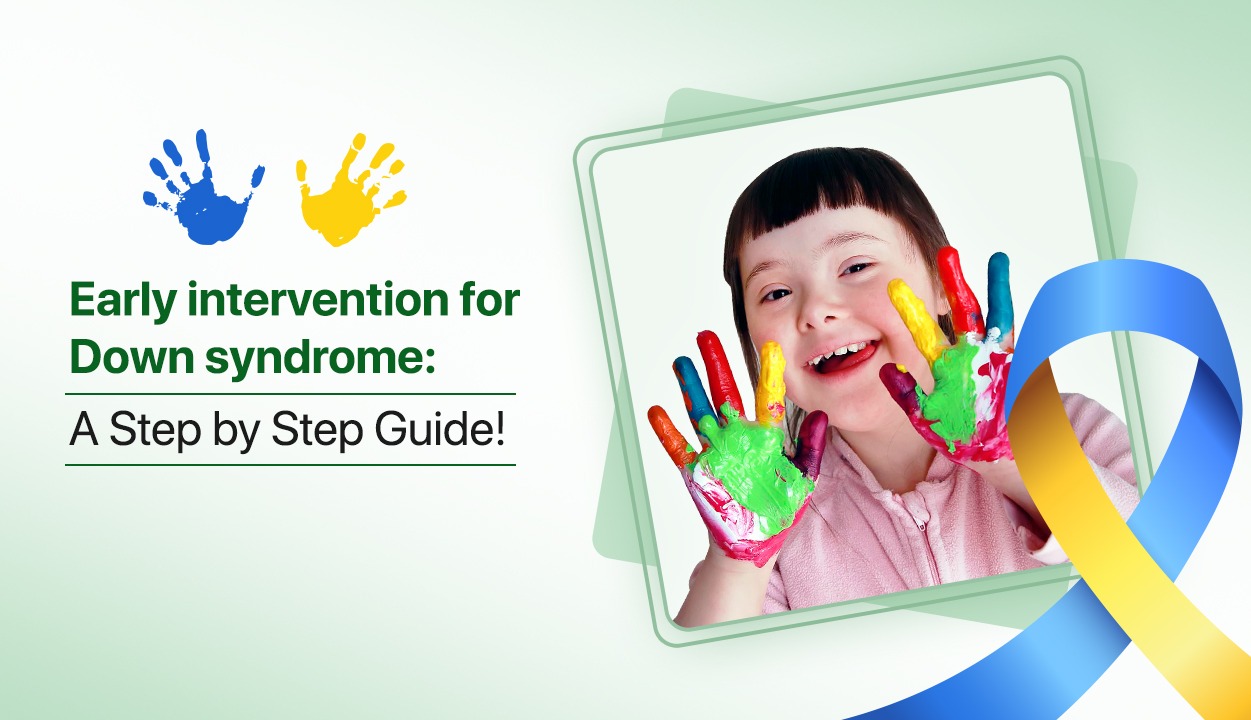
Early intervention for Down syndrome: A Step by Step Guide!
Children are fast learners. A 7-month-old can recognize patterns and relate them in his head with words, commands, colours, and emotions. Children with Down syndrome, however, take time to catch up. They are not deliberately slow; their biology makes them slow. This also invites a number of challenges for the family in their attempt to get Down syndrome support services. In this blog, we help you learn about different aspects of early intervention for Down syndrome.
Is Early Intervention for Down syndrome Necessary?
Yes, it is difficult for a child with Down syndrome to cope with surroundings on their own, which is why early intervention for Down syndrome is necessary. By following a simple mix of strategic therapies, you can help your child overcome difficulties from early childhood. By the time school is on the cards, the child is better prepared to step outside.
Therapies for children with Down syndrome: What you need to know!
If you are looking for Down syndrome support services, look first for a trusted therapy centre that has good reviews to their credit. Finding a certified trainer is equally important. Since no two children with Down syndrome are similar their therapies also require personalization.
Physical Therapy
Children with Down syndrome are not sloppy, low or soft muscle tone prevents them from moving about freely. Therefore a child with Down syndrome may tend to sit in the same spot for hours. Physical therapies play a key role in developing muscle power and motor skills. Adaptive sports like football, dance, gait pattern exercises, hip and knee dominant exercises like swimming, jogging, and cycling can yield effective results. Start right from childhood.
Occupational Therapy
Coping with daily life basics like putting on clothes, eating, combing hair, tying shoe laces can be extremely difficult but occupational therapies can help. By focusing on coginitive skill building, occupational therapies help a child improve the way their brain functions. Sensory integration is also used as a part of occupational therapy to familiarize a child with scent, texture, and sound. Other strategies like social skill building and emotional regulation tactics empower a child with Down syndrome to live a quality life.
Speech and Communication Therapy
Speech therapy fixes how a child with Down syndrome comprehends language, articulates, avoids vocabulary slips and improves fluency. By figuring out communication gaps, speech therapy helps the child to have better social life. Common strategies under speech and communication therapy include use of phonology, visual aids, and sign language.
Nutritional Therapy
Nutritional therapy is highly suggested because Down syndrome children suffer a great deal from digestive issues. Nutritional experts can individualize meal plans and help improve dietary habits of the child. If the child eats in appropriate quantity and variety he may not get sick easily.
Behavioral Support
Down syndrome support services are not complete without taking into account the emotional well-being of the child. Behavioral support techniques are aimed at conveying anger, fear, sadness, happiness, and empathy through controlled social interactions and relationship-building activities.
While the therapies for children with Down syndrome sound like simple techniques, without expert supervision, monitoring, and care, results may be ineffective or may be delayed. Talk to an experienced doctor today and personalize early intervention methods unique to your child’s needs.
